Have you ever noticed the small colored squares on the bottom of toothpaste tubes? If you’ve ever found yourself wondering what they signify, you’re not alone. There’s a lot of confusion about these little marks, with many people believing they indicate the type of ingredients in the toothpaste. Some assume that each color represents whether the product is made from natural, chemical, or a mix of both ingredients. However, this widespread assumption couldn’t be further from the truth. Let’s unravel the real purpose of these mysterious colored squares!
Understanding the Mystery of Colored Squares on Toothpaste Tubes
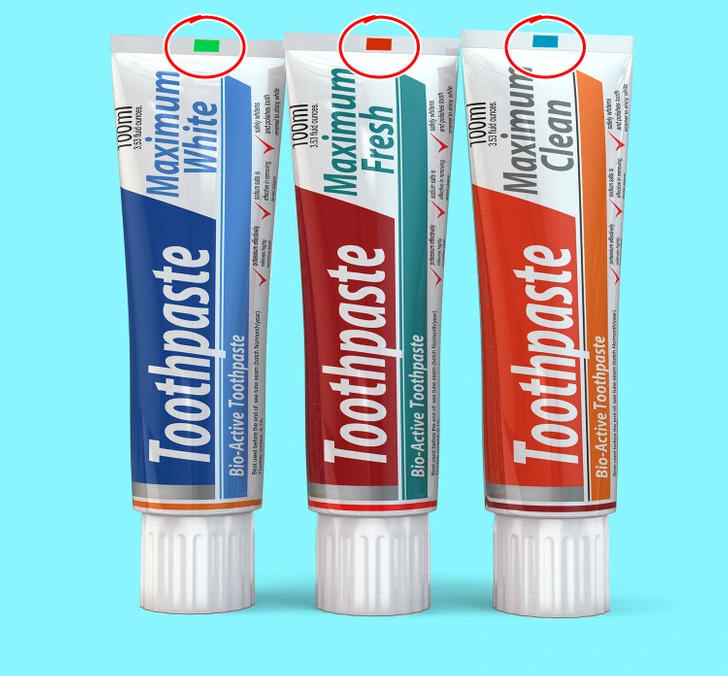
The colored squares at the base of toothpaste tubes are often misinterpreted. Various online sources have claimed that these colors provide insights into the composition of the toothpaste, but this is purely a myth. The truth is far less exciting and much more practical.
The Real Purpose of the Colored Squares
The small colored squares on toothpaste tubes are known as “eye marks” or “eye marks for cutting and sealing.” They play a crucial role in the manufacturing process rather than providing information about the ingredients.
During production, toothpaste tubes go through high-speed machinery, which needs to accurately identify where to cut, fold, and seal the tube. The colored squares serve as guides for the light sensors on these machines, ensuring that the tubes are properly aligned. This guarantees that each tube is sealed in the correct place, with a neat finish at the bottom.
How Colored Squares Aid in Production
These eye marks may seem like a minor detail, but they’re essential for efficient production. The high-speed machines use these markings to understand the precise positioning needed to finish each tube.
1. Helping with Alignment
The eye marks help the machines identify where the end of the tube is, allowing for accurate alignment during production. Without these markers, the machines could misalign the cutting and sealing process, resulting in faulty or poorly sealed tubes.
2. Ensuring Proper Cutting and Sealing
Once the machines detect the colored square, they know exactly where to cut and seal the tube. This helps maintain consistency and quality control, ensuring that each toothpaste tube meets the manufacturer’s standards.
Why Different Colors Are Used on Toothpaste Tubes
If the colored squares don’t indicate ingredients, why are different colors used? The color of the square doesn’t signify anything about the toothpaste’s formula or composition; instead, it’s primarily for machine readability.
1. High-Contrast Markings
The colors chosen for the squares—often black, green, blue, or red—are typically high-contrast colors that are easy for light sensors to detect. The color choice depends on the packaging design, tube color, and the specific requirements of the production line.
2. Distinguishing Between Product Types
While the colors themselves don’t reveal ingredient information, they can sometimes be used to help factory workers distinguish between different batches, types, or flavors of toothpaste during packaging. For instance, a manufacturer might use a red square for one type of toothpaste and a green square for another, purely to aid the packaging process.
Debunking the Myths Surrounding Colored Squares
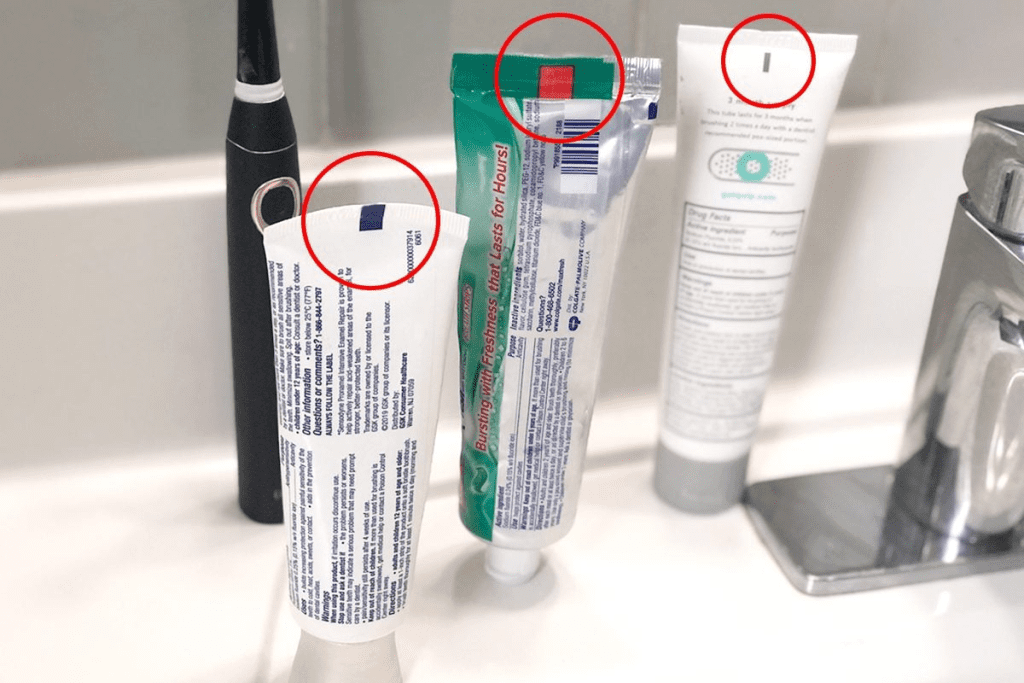
The myth that colored squares reveal whether a toothpaste is natural or chemical-based has been circulating online for years. Let’s address some of the common misconceptions and clarify the truth.
Myth 1: Colored Squares Indicate Ingredient Types
One of the most widespread beliefs is that the color of the square denotes whether the toothpaste contains natural ingredients, synthetic chemicals, or a combination of both. For example, some people claim that:
- Green means all-natural ingredients.
- Blue indicates natural and medicinal ingredients.
- Red represents natural and chemical ingredients.
- Black signifies only chemical ingredients.
This interpretation is entirely false. The colors have no correlation to the toothpaste’s ingredients, formulation, or safety. It’s a complete misconception fueled by misinformation.
Myth 2: The Colors Relate to Health Benefits
Another misconception is that the colors reflect the toothpaste’s health benefits, such as being designed for sensitive teeth, whitening, or cavity protection. Again, this is not true. The colors serve no purpose beyond guiding the machinery during the packaging process.
How to Really Understand Toothpaste Ingredients
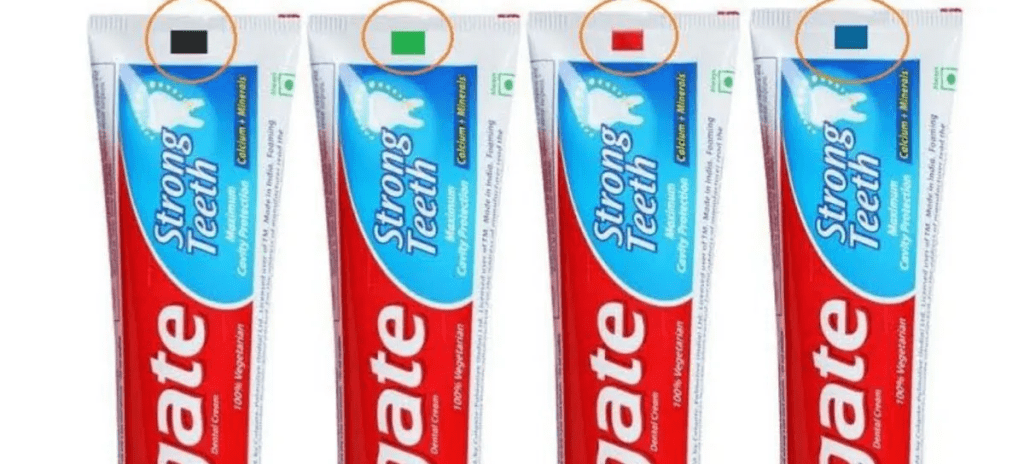
If you’re interested in understanding the ingredients of your toothpaste, the best place to look is the ingredient list on the back of the packaging. The ingredients are listed in detail, often accompanied by information about the specific benefits, such as whitening, sensitivity relief, or gum protection.
Key Ingredients to Look For:
- Fluoride: Helps prevent cavities and strengthens enamel.
- Hydrogen Peroxide: Common in whitening toothpaste for removing stains.
- Potassium Nitrate: Used in toothpaste for sensitive teeth to reduce pain.
- Triclosan: An antibacterial agent that fights gum disease.
- Sodium Lauryl Sulfate (SLS): A foaming agent, though it can be irritating to some users.
By checking the ingredient list, you can make an informed decision about the toothpaste that best suits your needs.
Tips for Choosing the Right Toothpaste
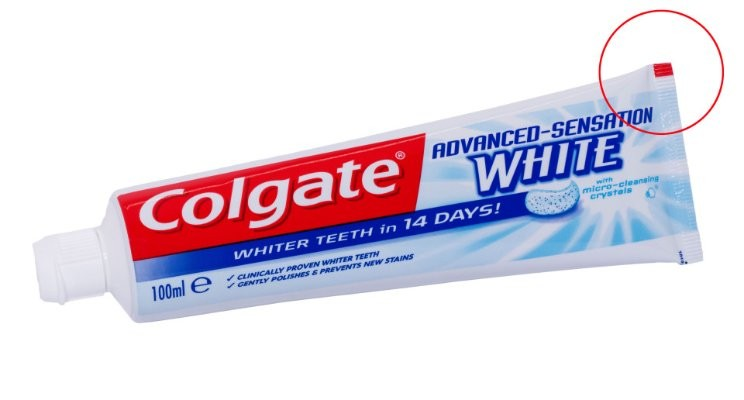
While the colored squares may not provide insights into the toothpaste formula, there are still other factors you can consider to ensure you’re choosing the right product for your oral health.
1. Identify Your Oral Health Needs
Think about what you want from your toothpaste. Are you looking to whiten your teeth, reduce sensitivity, fight cavities, or address gum health? Different types of toothpaste are formulated to target specific oral health concerns.
2. Check for ADA Seal of Approval
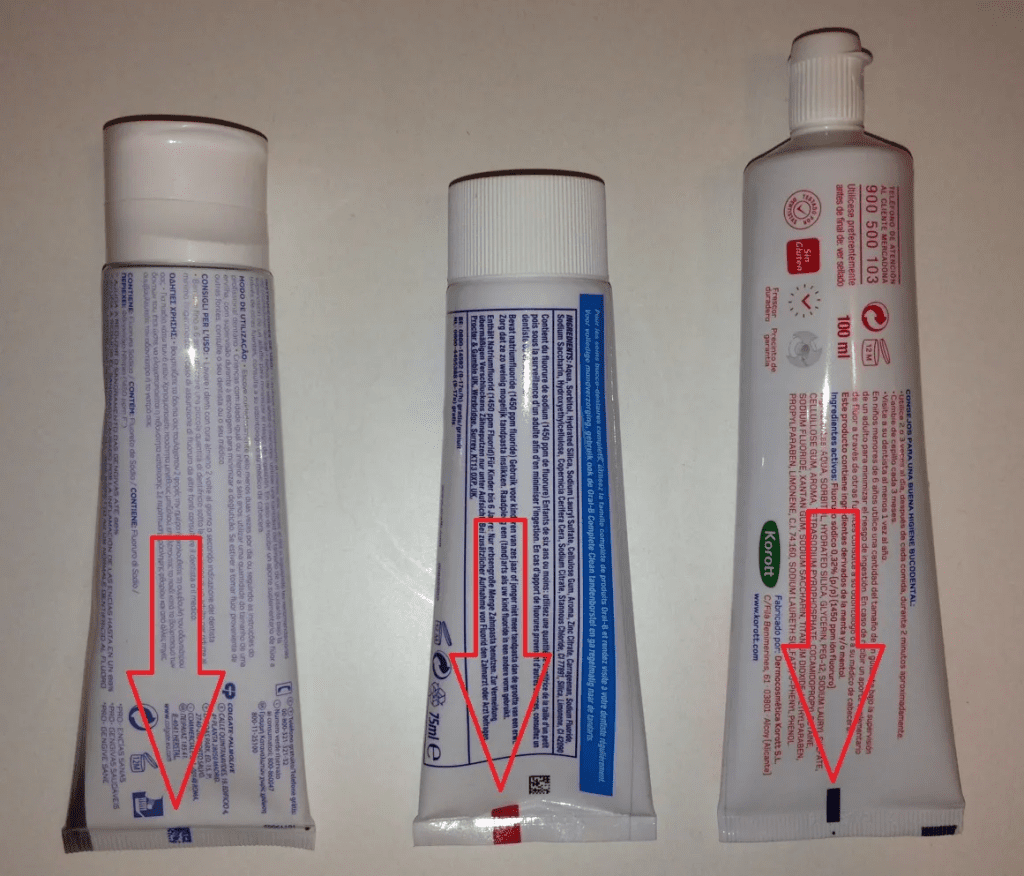
Look for toothpaste with the American Dental Association (ADA) Seal of Approval. This seal indicates that the toothpaste has been tested for safety and effectiveness.
3. Read the Ingredient List
The ingredient list is the most reliable source of information regarding the toothpaste’s composition. If you’re concerned about specific ingredients, like fluoride or artificial flavors, checking this list is your best bet.
Conclusion: The Real Meaning of Colored Squares on Toothpaste Tubes
The colored squares on toothpaste tubes are nothing more than eye marks for manufacturing, helping machines cut, fold, and seal the tubes correctly. Despite the myths circulating online, these marks do not provide any information about the toothpaste’s ingredients, safety, or health benefits.
The next time you pick up a tube of toothpaste, you can confidently ignore the colored square at the bottom. Instead, focus on the ingredient list and other product details to ensure you’re choosing the right toothpaste for your oral health needs. So, now you know—the colored squares are just there for the machines, not for you!


